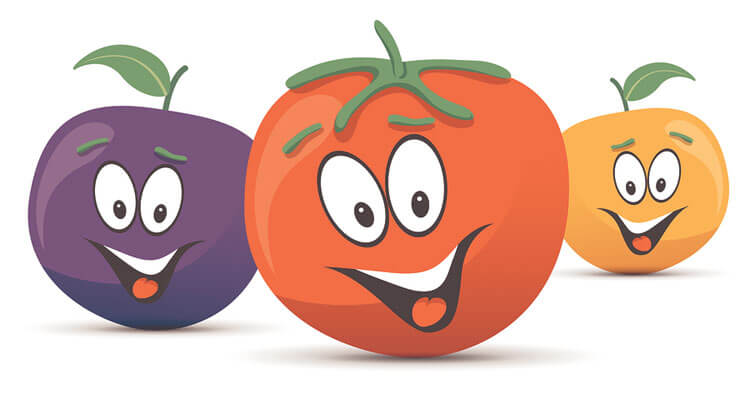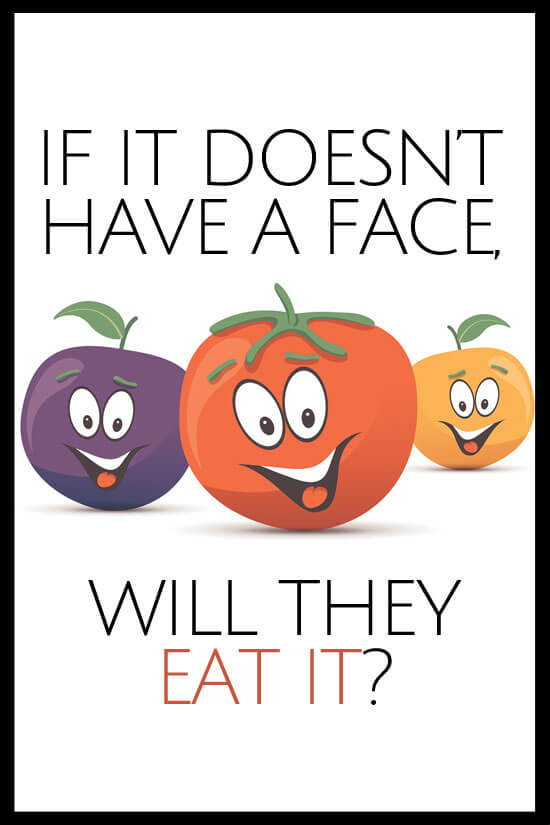If It Doesn’t Have a Face, Will They Eat It?

When I was a child, I thought that cows laid beef. I mean, think about it. No one ever teaches us that we kill animals to provide food. We learn “cows give us milk,” “chickens give us eggs,” etc.
It wasn’t a far stretch to imagine that cows laid beef or that pigs cheerfully gave us bacon. I wasn’t raised on a farm, so I never put two and two together. Grocery store packaging doesn’t help. It’s not as if bacon comes with a picture of a pig on it. I remember being particularly confused by Chicken of the Sea™ and Chicken in a Biskit™, my mother’s favorite. Did chickens live in the ocean, in “biskits?” I wondered. What is a biskit, anyway? I digress, but my point is that as children, the source of our protein is hidden from us; presumably, so we do not feel badly that animals are slaughtered for our benefit. A misguided policy, perhaps, but understandable.
This experience is why I find the latest trend to anthropomorphize our fruits and vegetables so puzzling. Kids generally know that they come from plants and farms. It’s a simple concept. No one is upset over their harvest. It was working! So why the change?
A few weeks ago, I went to the store to buy mandarin oranges. I didn’t see any, so I checked with the produce clerk.
“We don’t have any mandarin oranges,” he said, “but we got some halos in today.”
“Halos?” I mused, “Angelic circlets of purity and blamelessness? I’d like one of those.” But alas, the new name for mandarin oranges is halos – oranges, imbued apparently, with “pure goodness.”
Mandarin oranges are not the only produce receiving an anthropomorphic makeover. Kiwis have become “Mighties.” Grape tomatoes are now winged “Cherubs,” another heavenly food, and acid-free tomatoes have become athletically inclined “Sunbursts.”
What gives? We hide the fact that we kill animals and pretend that we’re eating “human” fruits and vegetables? It’s baffling, but perhaps it’s working. If our children begin eating more fruits and vegetables, I’m good with that. If our children begin thinking we have to hunt for our fruits and vegetables, we may have to rethink this strategy.
In the meantime, if your children refuse to eat faceless fruits and vegetables, I suggest you have some artistic fun. Buy a bag of black-eyed peas (call them “Eyebrights,” if you prefer) and make as much anthropomorphic produce as your heart desires. Bon appétit!
Pin it for Later

READ MORE IN THE FAMILY ROOM
This post was written by Lisa Taylor exclusively for BonBon Break Media LLC.




